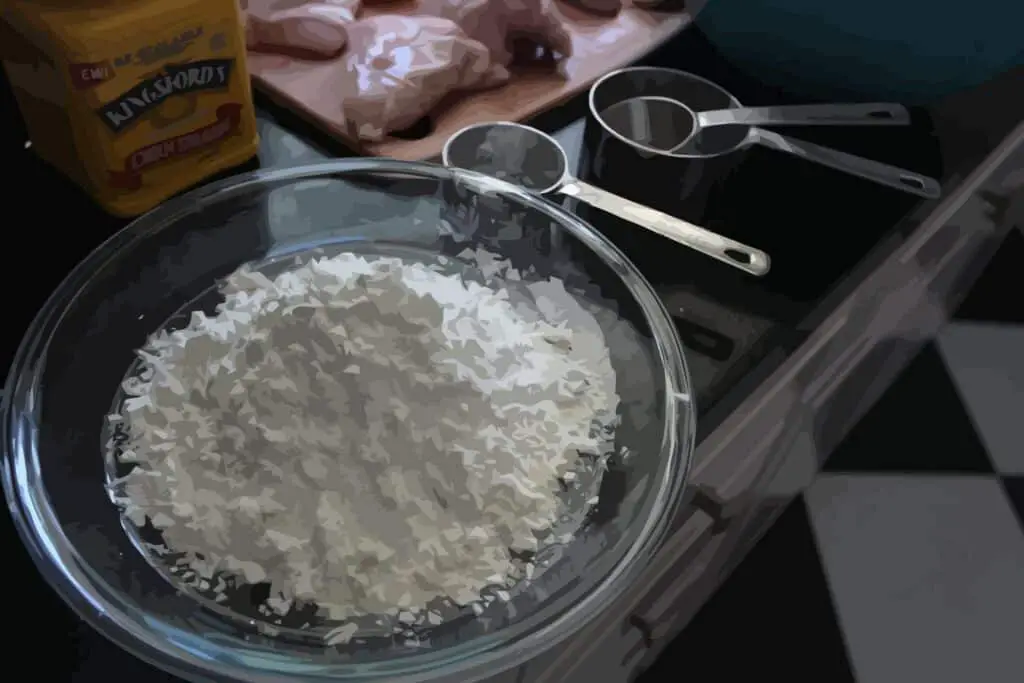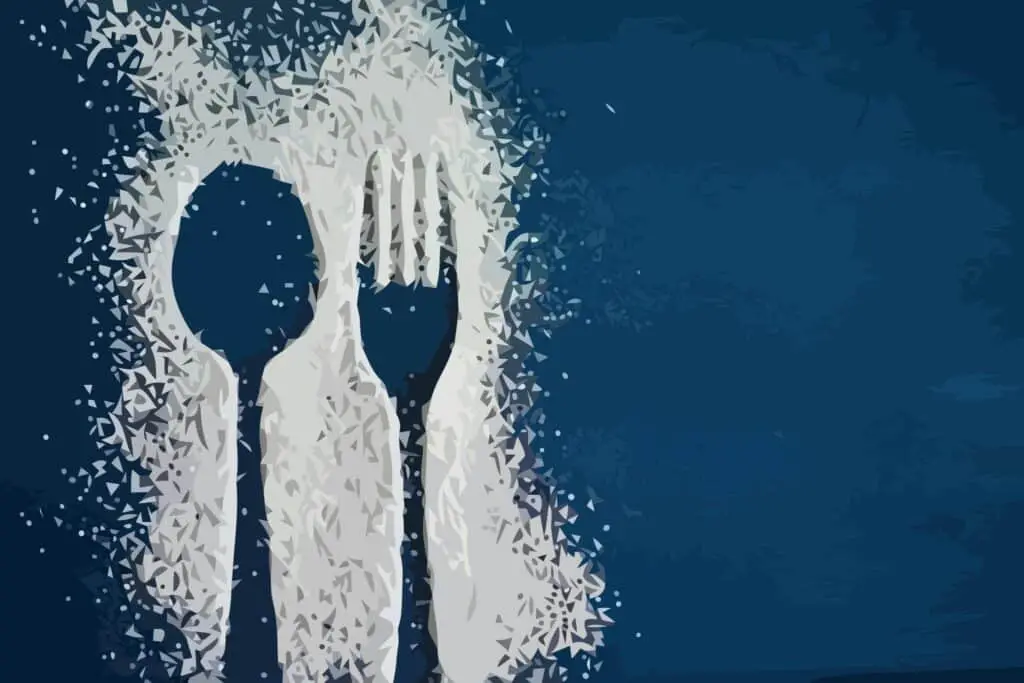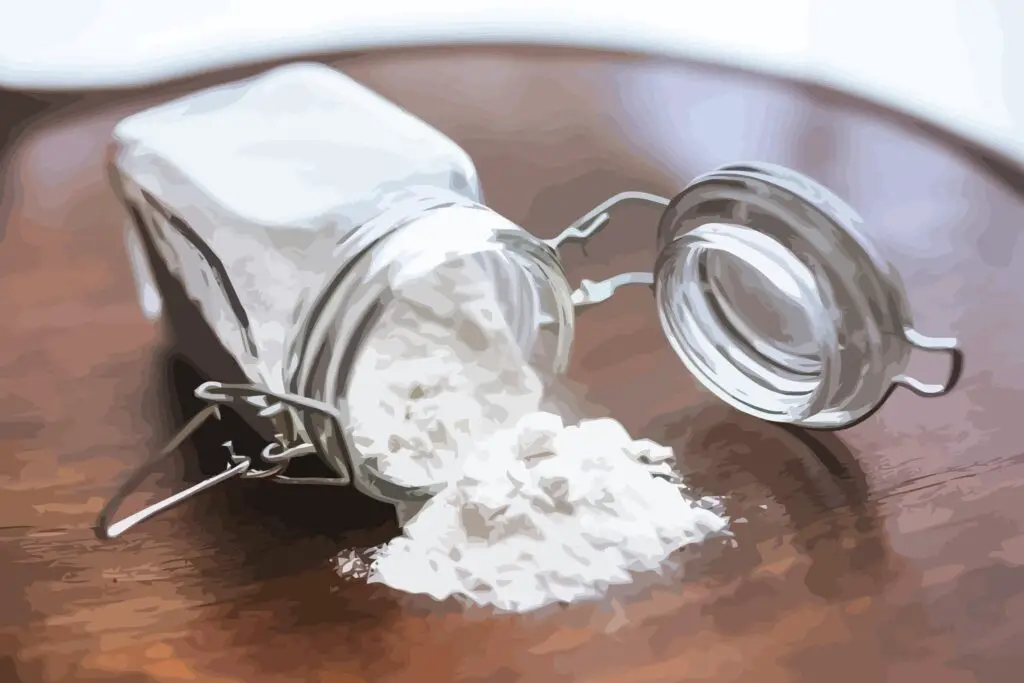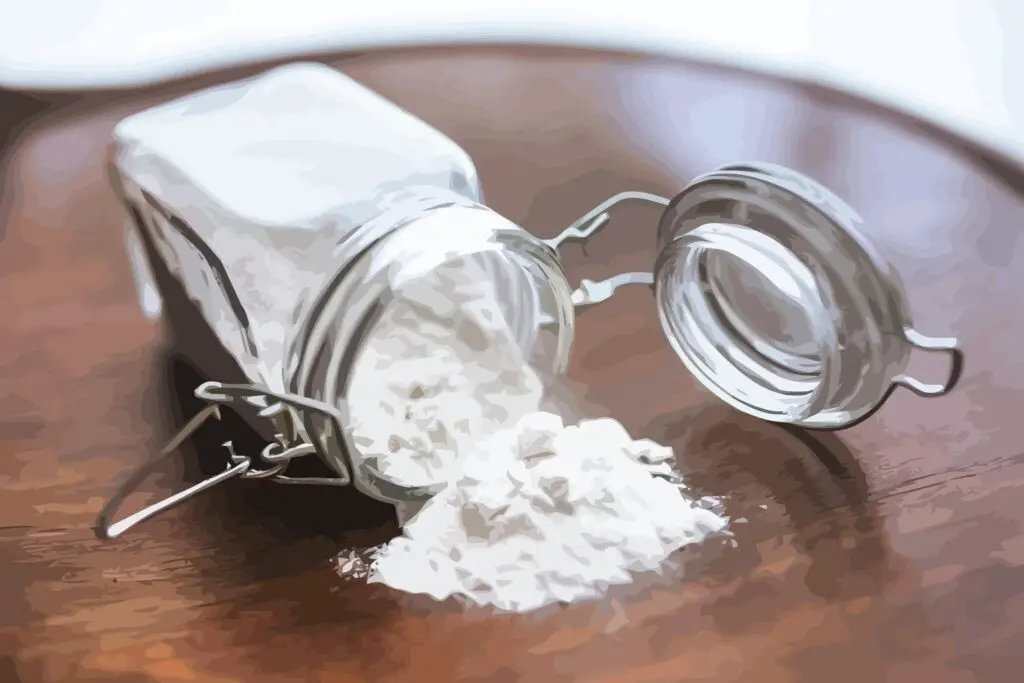Making cornstarch is a relatively simple process when done correctly. Not only does it provide an inexpensive and easy-to-acquire ingredient for any home cook, but it can also have useful applications in the kitchen for baking, thickening sauces or even as a substitute for other starches.
In addition to its practical usage, learning How To Make Cornstarch gives you the satisfaction of knowing that you’ve crafted something from scratch with your own two hands.
That’s why we put together this guide on How To Make Cornstarch – so you can get all the great benefits that come along with making your own starch right at home!
Contents
- What is Cornstarch?
- Different types of Cornstarch and their uses
- The Benefits of using Cornstarch in cooking
- How does Cornstarch work?
- How To Make Cornstarch?
- How to store Cornstarch?
- Can we Freeze Cornstarch?
- Common Substitutes for Cornstarch
- Can we make Cornstarch without Using Corn?
- Conclusion: How To Make Cornstarch
- FAQ Homemade Cornstarch
- Can you freeze corn starch?
- Do you mix cornstarch with hot or cold water?
- What to do if you add too much cornstarch?
- Is cornstarch the same as potato starch?
- How to make cornstarch with flour?
- Can we use milk instead of water when making cornstarch?
- What can I use instead of cornstarch?
- Can cornstarch go bad?
- Is cornstarch and Cornflour the same thing?
- How to use cornstarch?
- What is the method of preparing corn starch?
- What are the benefits of using corn starch?
- How do you make homemade cornstarch for cooking?
- How do you make instant cornstarch?
What is Cornstarch?

Cornstarch, sometimes referred to as cornflour, is a carbohydrate extracted from the endosperm of corn. It is used in cooking for thickening sauces and gravies, as well as for baking and coating fried foods.
The starch granules swell when mixed with liquid, creating a smooth texture that can help to thicken or add structure to dishes. Cornstarch can also be used to make a slurry, which is a mixture of cornstarch and water that helps to bind ingredients together.
Different types of Cornstarch and their uses
Cornstarch is made from the endosperm of corn, and various types exist depending on the type of corn used.
Different types may be used for different purposes – instant cornstarch, for example, can be used when you need a quick thickening agent without lumps.
Regular cornstarch has more complex uses, such as for baking or creating crispier food textures.
The Benefits of using Cornstarch in cooking
As an avid cook, I have discovered that cornstarch is a versatile and invaluable ingredient in the kitchen. Not only does it add a delightful thickness and texture to various dishes, but it also offers a range of benefits that can enhance your culinary adventures.
- Thickening Agent: One of the primary benefits of using cornstarch is its ability to thicken sauces, soups, gravies, and desserts. Unlike flour, cornstarch creates a smooth and glossy consistency without the added taste, making it ideal for achieving that perfect texture in your recipes.
- Gluten-Free Alternative: For those with gluten sensitivities or celiac disease, cornstarch is a fantastic substitute for wheat-based thickeners like flour. It allows you to achieve the desired thickness in your recipes without compromising on taste or texture.
- Proper Browning: When browning meat or vegetables, dusting them with a light coating of cornstarch before cooking creates a beautiful golden crust. This little trick ensures a crispy exterior that seals in the flavors, keeping your dishes moist and delicious.
- Binding Agent: Whether it’s making meatballs or veggie burgers, cornstarch can act as a binding agent, holding ingredients together and preventing them from falling apart during cooking. This makes it an essential ingredient in various recipes that require shaping and forming.
- Texture Enhancer: Adding a tablespoon or two of cornstarch to your cake and cookie batters can lend a tender and delicate texture to your baked goodies. It keeps them moist and prevents them from becoming too dry or crumbly.
- Oil Absorbent: When indulging in deep-fried delicacies, cornstarch comes to the rescue by absorbing excess oil and creating a crunchy exterior. Its light and powdery nature make it an excellent addition to batters for frying seafood, vegetables, or even crispy chicken.
- Freezing Aid: When freezing fruits for pies or other desserts, tossing them in cornstarch can help absorb excess moisture as they thaw. This prevents a soggy pie crust and ensures a perfect consistency when you decide to indulge in your frozen treats.
How does Cornstarch work?

Cornstarch works by absorbing liquid and releasing starches which causes the mixture to thicken. When cornstarch is added to a hot liquid, it immediately begins to absorb the liquid and swell up, forming small lumps.
These lumps then burst open, releasing the starch molecules into the surrounding liquid where they can bind with other ingredients in the mixture. This binding process is what creates the desired thickening effect.
The starch molecules also have a high degree of heat stability, meaning they can withstand boiling temperatures without breaking down or losing their thickening ability.
Cornstarch is an incredibly versatile ingredient and can be used in many different recipes from sauces to desserts. Whether you’re looking to thicken a sauce or add structure to a pastry, learning how to make cornstarch at home can help you save time and money.
How To Make Cornstarch?
Making cornstarch at home is a simple and cost-effective process. The key to success is making sure you have the right tools and ingredients. Here’s How To Make Cornstarch:
– Cornmeal
– Water
– Food processor or high speed blender
– Mortar and pestle (optional)
– Cheesecloth or sieve
– Shallow pan
Once you have all the necessary tools and ingredients, follow these steps:
1. Grind up the cornmeal into a fine powder using a food processor or high speed blender. If you don’t have either of these items, you can also use a mortar and pestle to grind the cornmeal by hand.
2. Transfer the powder to a bowl and add water, stirring until it forms a thick paste.
3. Simmer the mixture over low heat for about an hour, stirring occasionally.
4. Strain the mixture through cheesecloth or a sieve, discarding any solids that remain.
5. Pour the liquid into a shallow pan and set aside to cool and thicken.
6. Transfer the cooled mixture to an airtight container and store in the refrigerator for up to two weeks.
Now you’re ready to use your homemade cornstarch at home!
Related: Can You Make Mochi With Regular Rice Flour? – Oxbow Tavern
How to store Cornstarch?
Cornstarch should be stored in an airtight container in the refrigerator for up to two weeks. If you don’t plan on using your cornstarch immediately, it can also be frozen for longer-term storage. Cornstarch is highly sensitive to moisture and heat, so it’s important to keep it tightly sealed and stored in a cool, dry place.
Cornstarch is an incredibly versatile ingredient and can be used to thicken sauces, add structure to pastries, or as part of many other baking recipes. With just two basic ingredients, you can know How To Make Cornstarch. Remember to store it properly so that it can retain its thickening ability and be ready when you need it.
Making cornstarch at home is a simple and cost-effective process that can help save time and money without sacrificing quality. So, the next time you’re looking for an easy way to thicken your sauce or add structure to your pastry, don’t forget to try your hand at making cornstarch.

Can we Freeze Cornstarch?
Yes, cornstarch can be frozen for longer-term storage. It is important to note that cornstarch is highly sensitive to moisture and heat, so it’s best to keep it sealed tightly in an airtight container and stored in a cool, dry place.
For best results, make sure to consume the cornstarch within two weeks after defrosting. Freezing cornstarch can help extend its shelf life, but it is important to remember that the thickening ability of cornstarch may decrease over time. Therefore, you should use caution when using frozen cornstarch and test for proper consistency before serving.
It is also important to note that freezing cornstarch may change its texture, making it clumpier when defrosted. To prevent this, make sure to mix the cornstarch with an equal amount of cold water before freezing. This will help keep the cornstarch from becoming too dense or clumpy once thawed. More posts like this at naanonbroughton.com
Common Substitutes for Cornstarch
Although cornstarch is a great ingredient to have on hand in the kitchen, it is not always an option. If you’re looking for a substitute and don’t have access to cornstarch, there are other starches you can use instead.
Potato starch, tapioca starch, arrowroot starch and rice flour are all potential substitutes. Each of these starches has its own unique qualities and can be used in different applications, so it is important to do your research and find the right one for the job.
Common recipes with cornstarch as a key ingredient
Here are some specific recipes that use cornstarch as a key ingredient:
- Chicken a la King: This classic dish is made with chicken, mushrooms, and a creamy sauce thickened with cornstarch.
- Potato Pudding: This comforting dish is made with mashed potatoes, milk, eggs, and cornstarch. It’s baked until golden brown and served warm.
- Tempura: This Japanese dish is made with seafood or vegetables that are dipped in a batter made with cornstarch and water. The tempura is then fried until golden brown and crispy.
- Gingersnaps: These classic cookies are made with a dough that includes cornstarch. The cornstarch helps to create a chewy, tender texture.
- Kung Pao Chicken: This Chinese dish is made with chicken, peanuts, and a spicy sauce thickened with cornstarch.
These five common recipes are just the beginning, so don’t be afraid to experiment and let cornstarch work its magic in your own signature dishes. I hope this gives you some ideas for using cornstarch in your cooking!
Can we make Cornstarch without Using Corn?
No, cornstarch can only be made from cornmeal. Cornstarch is derived from the endosperm of corn kernels which cannot be found in other plants or grains. If you’re looking for an alternative thickening agent, there are plenty of options such as arrowroot, tapioca starch, potato starch, and more.
Cornstarch is a versatile ingredient that can be used in many different recipes from sauces to desserts. Making cornstarch at home is easy and cost-effective, allowing you to save time and money while still enjoying the same great results. With just two basic ingredients and some simple steps, you can make your own cornstarch in no time.
Conclusion: How To Make Cornstarch
is a simple and cost-effective process that can help save time and money without sacrificing quality. With just two basic ingredients, you can make your own cornstarch in no time. Remember to store it properly so that it retains its thickening ability and test for proper consistency before serving. If freezing, mix the cornstarch with an equal amount of cold water first. With How To Make Cornstarch, you can make delicious recipes without breaking the bank or spending too much time in the kitchen.
FAQ Homemade Cornstarch
Can you freeze corn starch?
Storing your cornstarch in the freezer may seem like a smart move, but it is actually not recommended. In fact, leaving this kitchen staple in its pantry or cupboard setting will help keep it fresher and safer than if frozen!
Do you mix cornstarch with hot or cold water?
Cornstarch is your secret weapon for creating the perfect, delicious sauce. Not many people know that it has twice the thickening power of flour – meaning you can achieve appetizing gravy with half as much effort! To get a lump-free texture, simply mix cornstarch with cold water prior to adding into hot liquid and voila – an exquisite meal awaits.
What to do if you add too much cornstarch?
If you’ve added too much cornstarch and your sauce looks more like glue than a savory delight, don’t despair! All you need to do is add a bit more liquid such as stock, water or cream.
Is cornstarch the same as potato starch?
Need to substitute potato starch for cornstarch? Fear not! Both starches can be used interchangeably in most recipes, so you don’t need to worry about a thing.
How to make cornstarch with flour?
Create a convenient cornstarch substitute from pantry staples! Mix equal parts all-purpose flour and water to achieve the perfect thickness for sauces or pastries. With just two ingredients, you can easily mimic the properties of storebought substitutes – so don’t get caught without key kitchen components again!
Can we use milk instead of water when making cornstarch?
When it comes to baking, milk can be an excellent substitute for water. This dairy product brings a fatty richness that could add depth of flavor and texture to your creations – just keep in mind the difference between its fat content and that of water! Depending on the recipe, other liquid alternatives such as cream or broth could also work in a pinch.
What can I use instead of cornstarch?
If you thought cornstarch was the be-all and end-all of thickeners, think again! Arrowroot powder, tapioca starch, potato starch or rice flour can all supply similar thickening power. And if you’re in a pinch for time? All-purpose flour with some water is an easy substitution that’ll do the trick. Get creative in your kitchen – who knows what delicious results await!
Can cornstarch go bad?
Cornstarch is a pantry staple that can stand the test of time! With proper storage, this versatile ingredient will be at your disposal for as long as you need it. Enjoy its sweetness and use freely with confidence—no fear of spoilage here! Just make sure to store it in a cool, dry place and consume within two weeks after defrosting.
Is cornstarch and Cornflour the same thing?
Cornstarch and corn flour may appear similar at first glance, but their origins differ drastically. In the US, corn flour is derived from whole kernel corn while its companion -cornstarch- exclusively comes from just taking its starchy portion. These two distinct ingredients bring a variety of flavors and uses to every kitchen!
How to use cornstarch?
For a thick, full-bodied sauce or stew without the floury aftertaste, reach for cornstarch! Twice as powerful an agent when compared to its wheaten counterpart, half of the recommended amount is all it takes. To blend smoothly with hot liquids and avoid any lumps in your recipe simply mix together your cornstarch and cold water before briskly stirring into your pot. Enjoy a sumptuous meal that packs twice the impact per spoonful thanks to this pantry staple!
What is the method of preparing corn starch?
Making cornstarch from scratch is a simple process. Start by grinding dried maize kernels in a food processor to create a flour-like consistency, then use cold water to form a slurry. Next, put the mixture through multiple sieves for filtering and add it to boiling water – stirring constantly! After cooling, strain the liquid and let it rest in the fridge. Once solidified, scrape it off and your homemade cornstarch is ready for use!
What are the benefits of using corn starch?
Starch has a multitude of culinary uses, not least its ability to absorb water. It is one of the most popular gluten-free thickeners, commonly used in stews, soups and gravies. Consequently it’s become an indispensable component for those with dietary restrictions related to wheat or other grains. On top of that, cornstarch is renowned for its ability to give a glossy sheen to sauces and desserts – perfect for professional-looking results!
How do you make homemade cornstarch for cooking?
Crafting homemade Cornstarch is a surprisingly easy endeavor! All you need to create this versatile powder are corn kernels and a food processor; with just those two ingredients, your kitchen can be transformed into an alchemic laboratory. The process itself involves simply grinding up the corn until it becomes finely pulverized – presto, you have one of the most useful pantry staples in existence!
How do you make instant cornstarch?
Make your own cornstarch in an instant with a surprisingly simple process! Begin by soaking the desired amount of kernels overnight and blending into a thick paste. Add this to boiling water, stirring steadily until it starts to thicken – you’ll have homemade cornstarch ready for baking or cooking in no time.
References:
